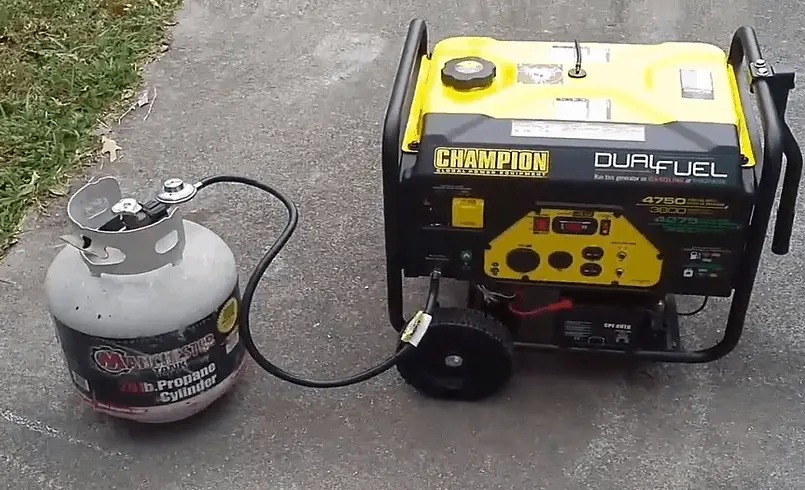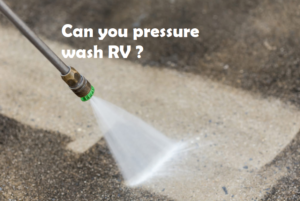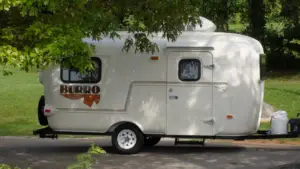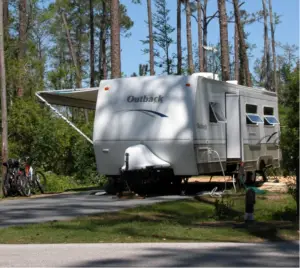People often wonder how RV travelers access their basic utilities while traveling on the road. Whether running an AC, cooking, or bathing, it will require power.
Most RVs have basic power sources like the battery, propane tanks, while some others are equipped with generators, inverters, and solar panels for uninterrupted electricity. RVs can also be plugged into shore power at campsite.
Lets explore all of these power sources in detail. Read on to get all the details.
Different power sources in an RV
Typically, an RV has two different electrical systems each separate from one another. A DC system of 12-volt and an AC system of 120-volt. The DC electrical system uses a 12-volt battery that powers most of the lights in the RV, water heater, water pump, carbon monoxide detector, refrigerator, and other things.
Whereas, the 120-volt AC electrical system derives its power from the RVs generator or hookup and serves power for running daily utilities like kitchen appliances, TV, and other electrical appliances that need a larger power.
1. Batteries
Almost every RV has a series of batteries installed in them for providing the source of power in the absence of an external power source. Batteries can run the electronic equipment that uses low power as the lights in the RV and some small appliances.
These batteries can be charged via an external power source connected to the RV. This includes generators, vehicle engines, solar, or offshore power.
But the major downside of the batteries involves their performance, which is fairly low. They are incapable of running the air conditioner or heating systems. Also, they can drain quickly if you tend to use them for running the microwave or other appliances.
Also, batteries require decent maintenance to keep them up and running and have to be replaced from time to time.
2. Shore power or direct electricity connection
When you connect your RV to an electrical AC grid, you are using shore power. RV connectors consist of 50 amps or 30 amps. You can usually connect them to a line that runs from a power source in a campsite but keep in mind to connect them to a 110V outlet. By using them you can run larger appliances in the RV.
Talking about the only downside while using this power source will be to take notice of a low-amp power. The electrical systems in your RV can be damaged if it draws more power than the shore power line, and the reverse can be fatal too. Chances are that you will blow the fuses but it might damage your RV or the power source.
3. Generators
They are just like shore power that provides AC power to your RV. Although they don’t generate much electricity like the shore power it depends on the type of generators. The electricity is measured in watts other than amps and a small RV can do well with a 1000W generator. Most of the RVs will need a 3500 generator for running big appliances like air conditioners.
There are some major disadvantages in using a generator. You cannot use them on rainy days as they can’t be used indoors, they produce carbon monoxide gas and you can rarely find a space where you can run it so that the noise won’t disturb anyone.
4. Solar panels
You need to understand that renewable energy sources are designed not to provide on-demand power requirements but to charge the batteries. They generate direct current rather than the alternating current which you get from generators or shore power. Hence you will be limited by the power your battery will produce.
But you can keep the battery running on for several hours by recharging them via solar panels without the need for powering them from a grid. The only disadvantage in using solar power is that you can’t get anything running from the current source of the panel and rely on the battery system and that also rules out any electric appliance that needs high power to work.
5. Propane
Propane tanks can be useful for people where there are no hookups available and they can fill their tanks at almost every truck stops, campgrounds, or gas companies. You have to pay around $3 per gallon and it will last up to 1 hour. Propane gas can run almost all the electronic appliances in your RV.
There isn’t any bad thing about using propane, but you should use this option while camping far away from the grid. The propane may not be cheaper compared to shore power.
6. Inverters
This is another means of getting electricity in an RV and they generate it from vehicle engines, batteries, solar panels, or generators. By using inverters you can save money by limiting the usage of fuels on generators.
They produce enough power to run appliances like fans, TV, heating pads, and so on. But you cannot run bigger appliances, and they have to depend on other equipment for performing.
How much power does an RV need?
The exact power that will be required for an RV to run will depend on the appliances that are a necessity while staying in it. You should take into consideration how each appliance can use power. Generally, every appliance will need more watts to start and then run on lower power.
For example, an RV refrigerator will need around 600 watts to start and need 180 watts for smooth running. Similarly, cookers will need 170 for starting and 270 for running, and so on.
But air conditioners and microwaves will need more power, which can go up to 2000 watts. So a decent power output can be around 2000 watts for your RV.
Do RVs needs to be plugged in?
An RV doesn’t have to be plugged in all the time but at campgrounds or state parks, you can plug-in your RV to get more functionality from it. Most people prefer to pug-in their RVs into an electric grid whenever possible. A power cord, a sewer hose, a water hose are the few things that can be plugged into your RV.
By plugging into an electric grid you can run both the small and big appliances in your RV with ease. A sewer hose connected to the RV will get rid of waste materials and a water hose will supply fresh water.
Watts consumption by appliances in RV
When getting power sources like battery, generator, or solar you need to consider the watts requirements. Depending on the watts consumption by RV appliances you can choose the size of the power source.
Batteries can only be used to power smaller appliances. Bigger appliances like an air conditioner or refrigerator can be run using shore power or generator.
AC or rrefrigeratorsconsume more power/watts and thus it’s important to consider their consumption. Air conditioner is measured in terms of BTU. Lets see average watts consumption for different BTU air conditioner.
Also note that running watts and starting watts for these appliances will be different. Staring watts would be highers than running watts. Lets see average watts requirement for AC.
15,000 BTU: Starting 3200 watts and Running 1700 watts
10,000 BTU: Starting 2000 watts and Running 700 watts
7,000 BTU: Starting 1600 watts and Running 600 watts
5,000 BTU: Starting 1100 watts and Running 450 watts
Average Watts consumption for running by other appliances is as below.
Refrigerator : 150 – 200 watts
Coffee maker : 600 watts
Microwave : 950 watts
Television : 150 watts
Hair Dryer : 1800 watts
Electric grill : 1800 watts
Cooker : 200 watts
In conclusion
The greater the number of power sources, the more comfortable you will get in an RV, and by knowing the basics you will have a worry-free adventure.





